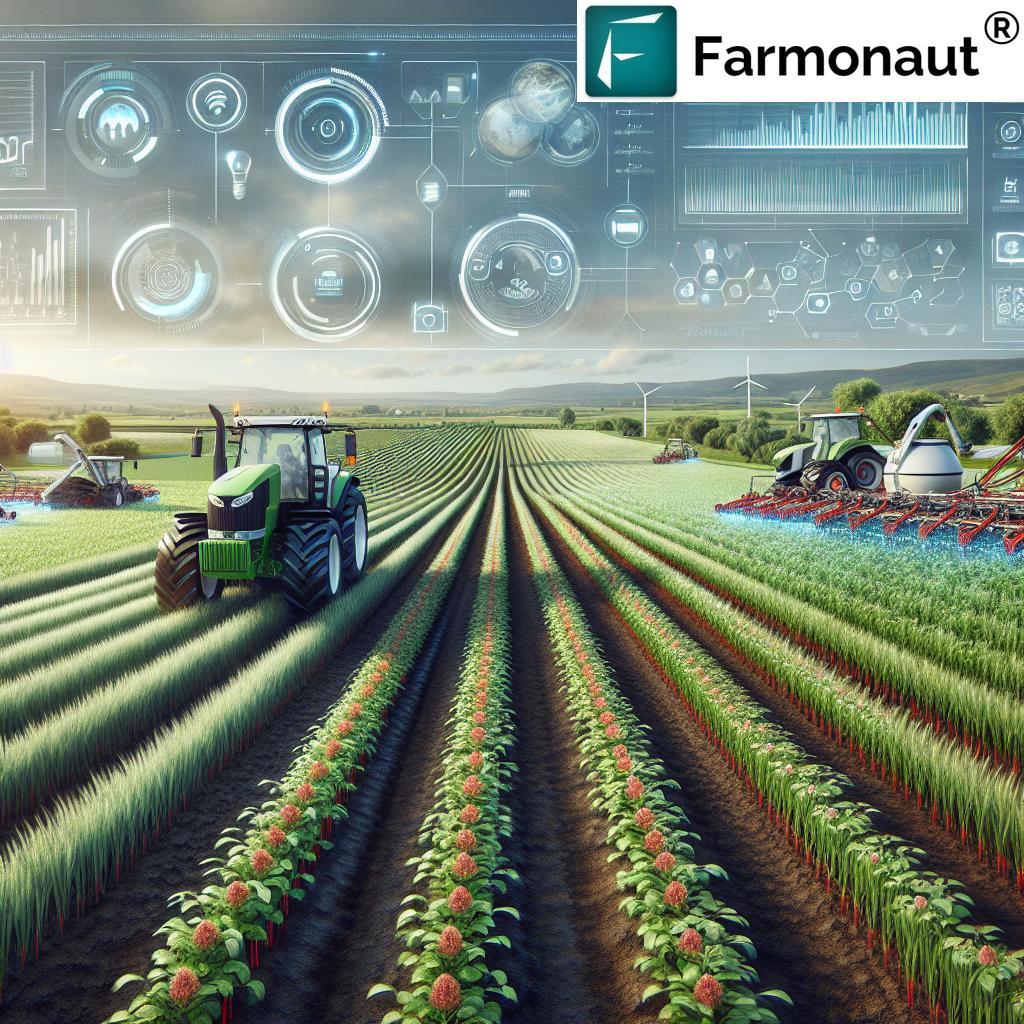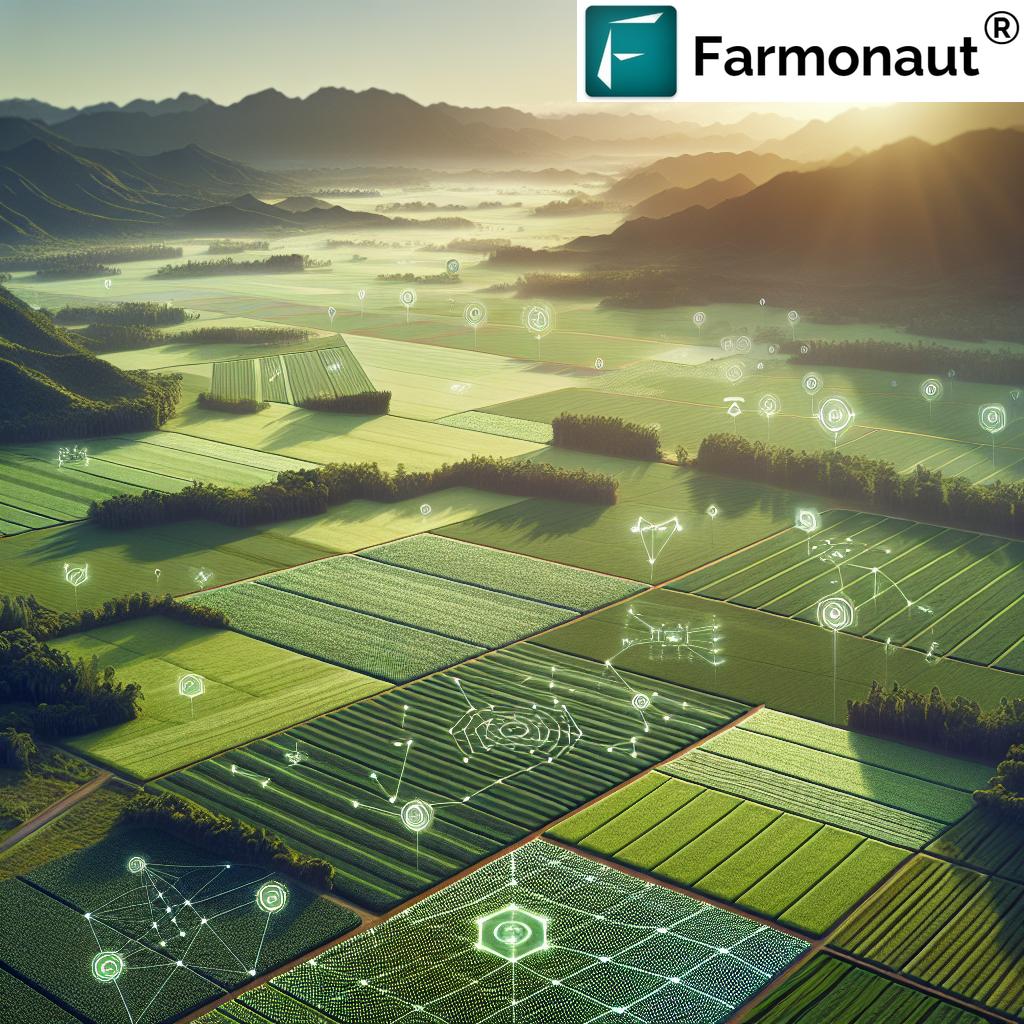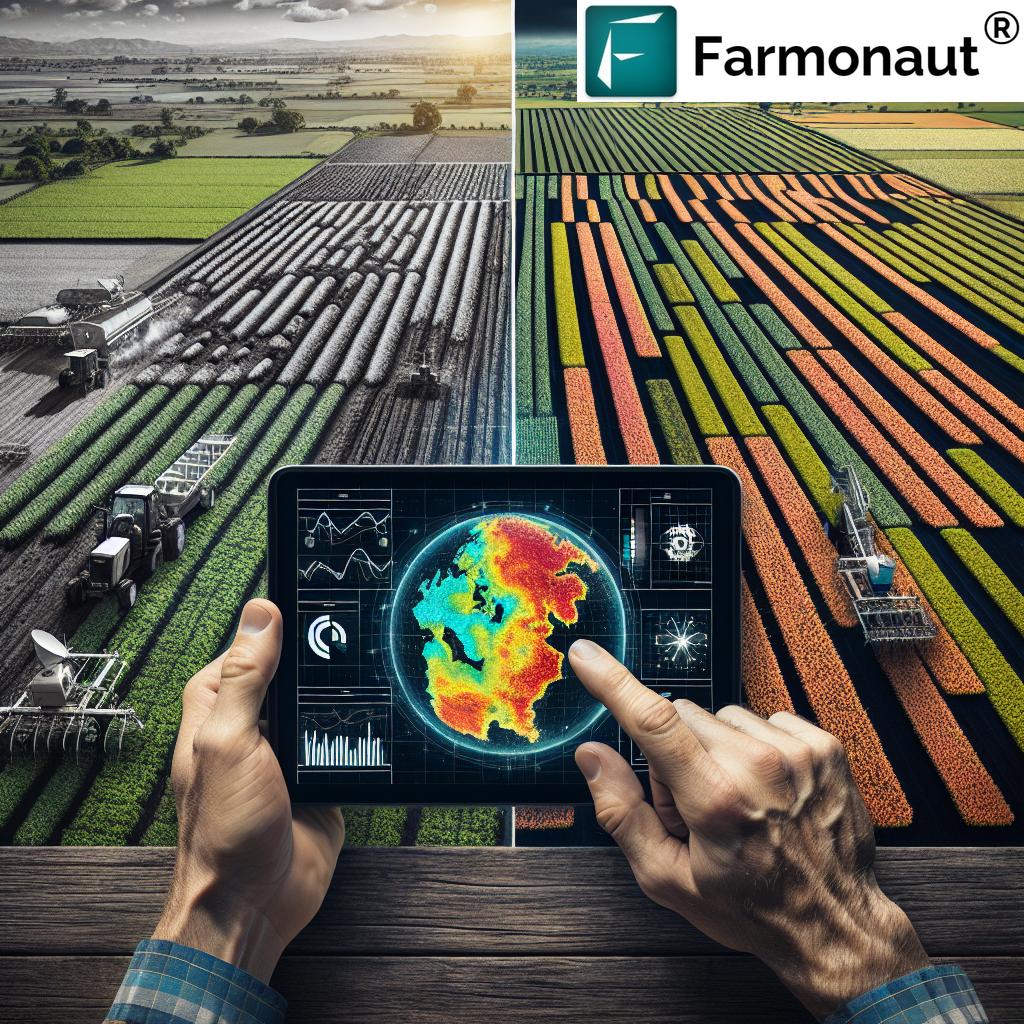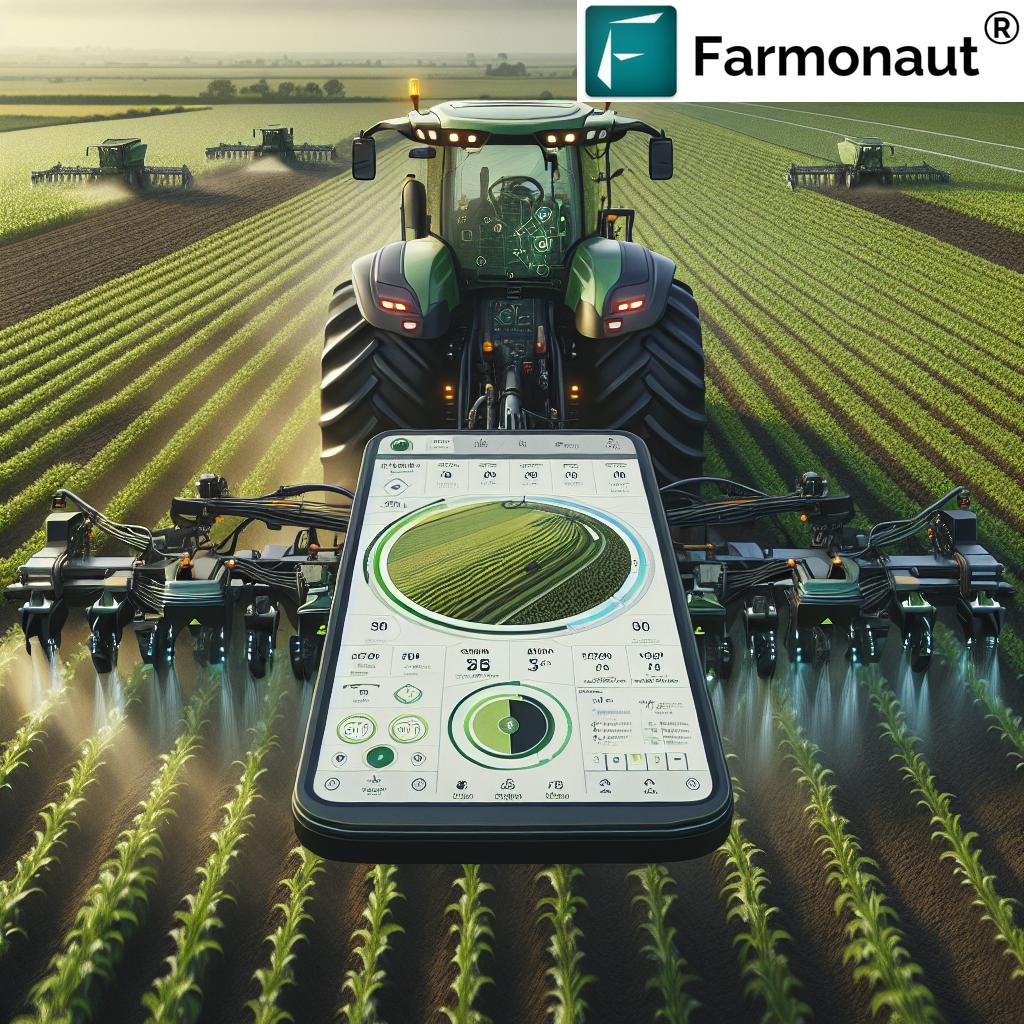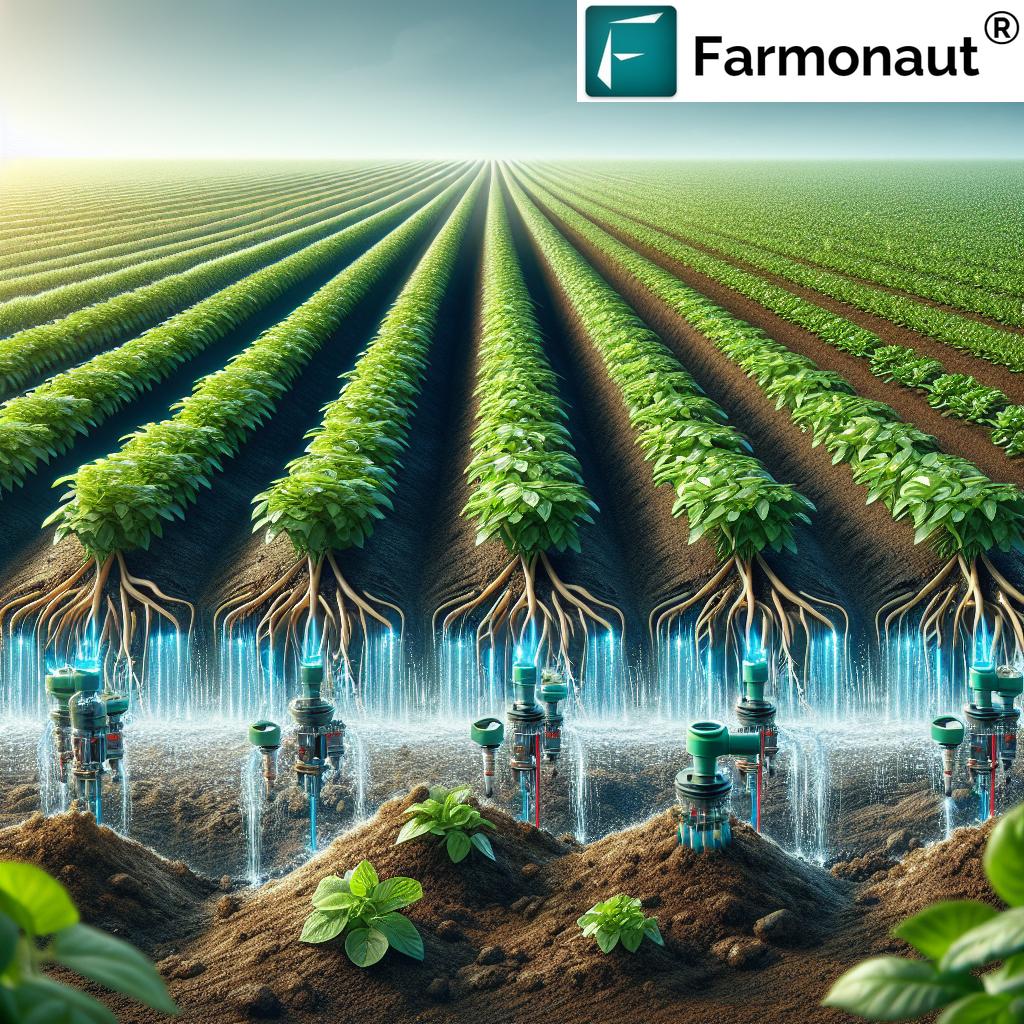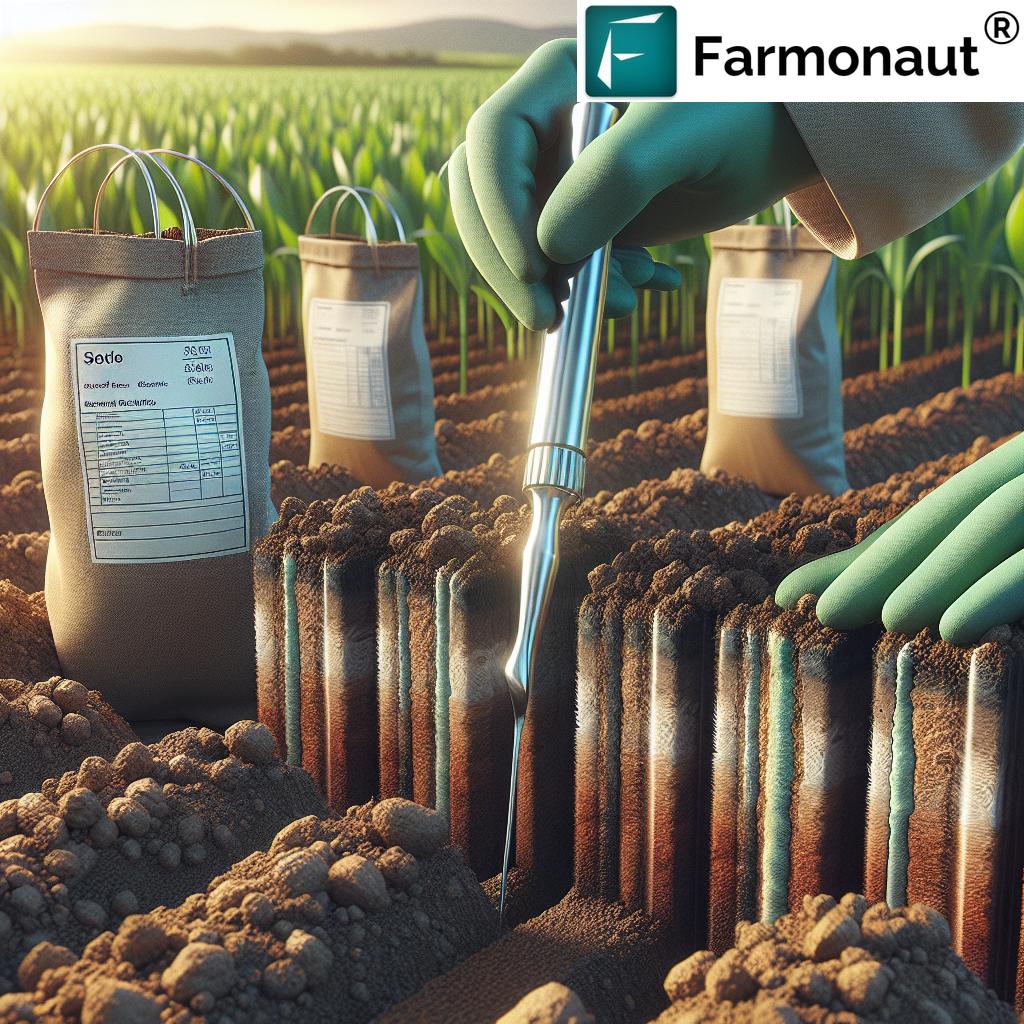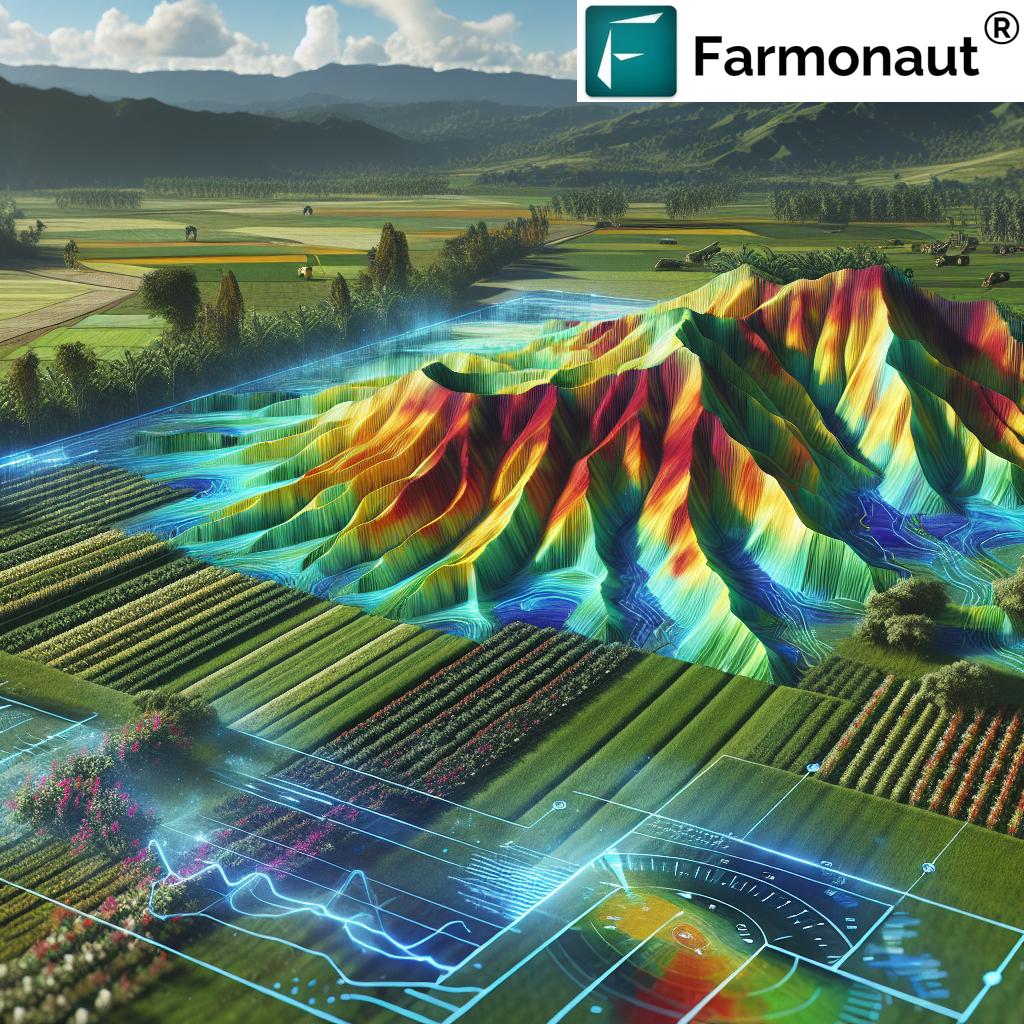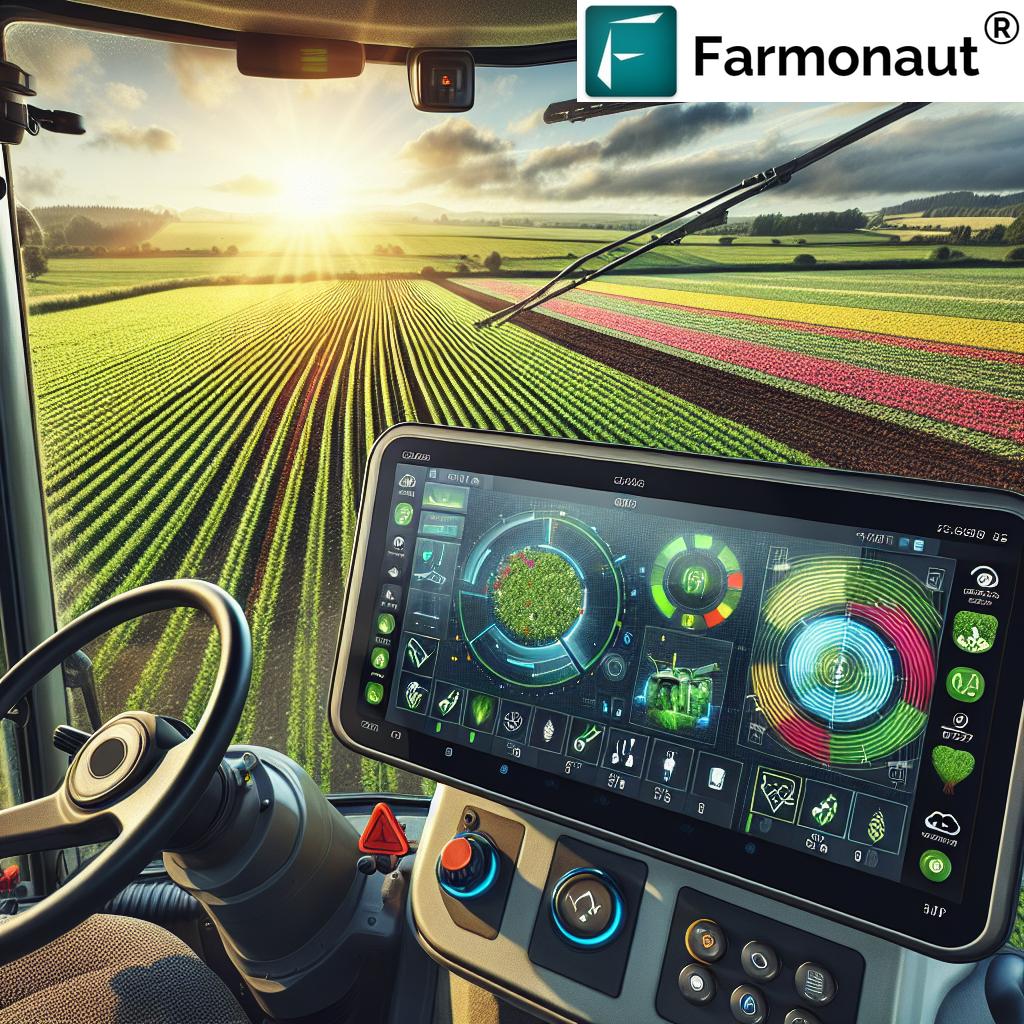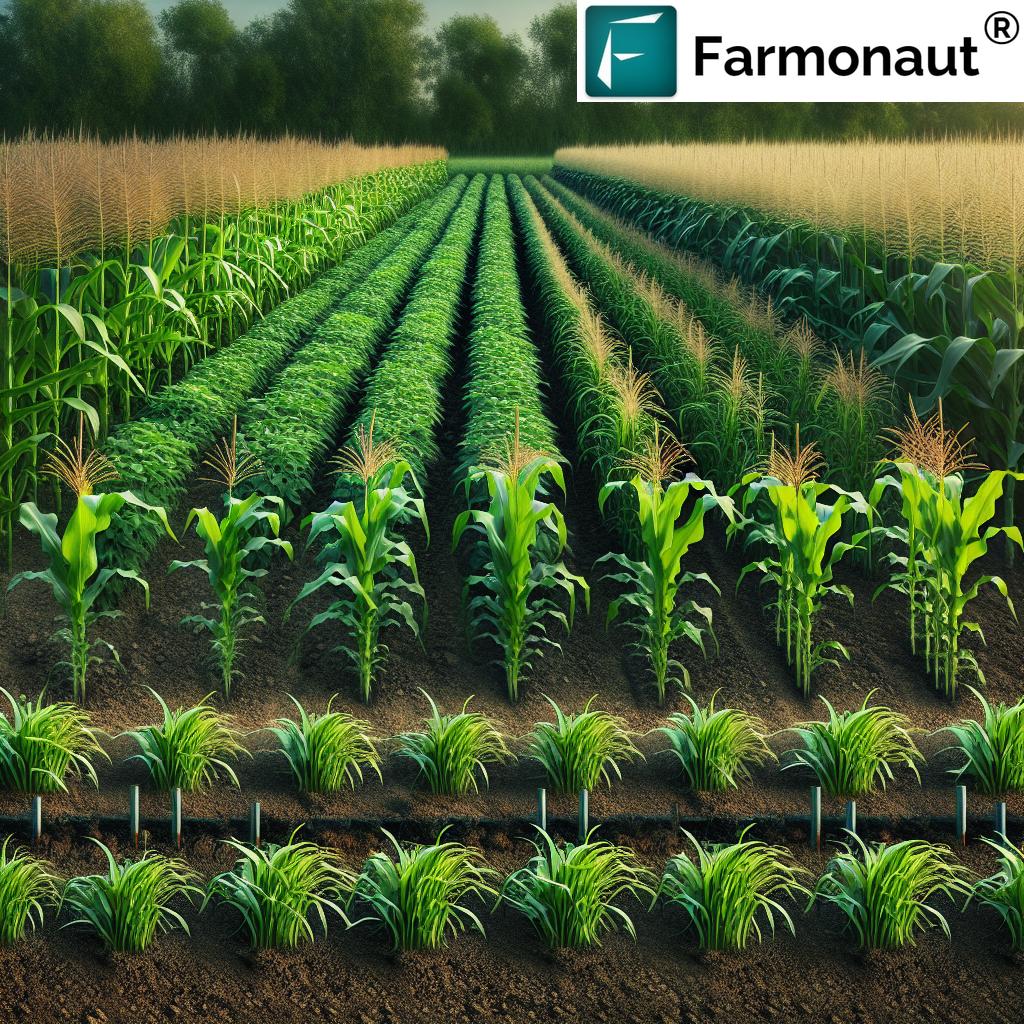Digital Farming Secrets: 7 Tech Upgrades You Need Now
“Digital farming can boost crop yields by up to 30% using precision agriculture and data-driven decisions.”
Introduction to Digital Farming
In today’s rapidly evolving agricultural world, digital farming stands at the forefront of a revolution—reshaping the way we grow food, manage resources, and meet global demands with precision. By adopting smart farming technologies, we empower ourselves to work more efficiently, sustainably, and profitably. This comprehensive guide uncovers essential tech upgrades for transforming crop yields, promoting sustainability, and optimizing every resource in our fields. Ready to discover the secrets that will shape the farms of tomorrow? Let’s dive in!
What Is Digital Farming? (Focus Keyword)
Digital farming, also known as smart or precision agriculture, means integrating advanced technologies like IoT, AI, drones, and satellite imagery into our everyday farming practices. By leveraging data-driven insights and automation, we make informed decisions that not only boost productivity and crop yields but also enhance efficiency and sustainability.
At its core, digital farming:
- Utilizes sensors, connected equipment, and IoT devices to collect real-time agricultural data on soil, moisture, temperature, and crop health
- Applies AI and machine learning algorithms to analyze these vast datasets for predictions and optimizations
- Deploys drones and aerial imaging for robust, smart field monitoring
- Integrates blockchain technology for secure and transparent farm-to-consumer tracking
- Leverages automation and robotics to solve labor challenges and streamline field operations
Why Go Digital? Key Benefits
Today’s modern farming faces pressure to feed a rising global population while conserving resources and reducing environmental impact. Digital farming answers this challenge through:
- Increased Productivity — Optimize every input from planting to harvest schedules for higher yields and quality
- Resource Efficiency — Technologies like precision irrigation and targeted fertilizer application minimize waste and lower costs
- Sustainability — Reduce chemical use, save water, and cut greenhouse emissions with data-driven practices
- Cost Savings — Lower operational costs through automation and minimized input wastage
- Traceability and Trust — Use blockchain for transparent supply chains, essential for consumers and regulators
- Data-Informed Decision Making — Real-time insights let us respond quickly to crop and environmental conditions
“Over 60% of farmers adopting smart tech report significant improvements in resource efficiency and sustainability.”
Digital Farming Secrets: 7 Tech Upgrades You Need Now
1. IoT in Agriculture: Transforming Crop Monitoring & Resource Use
The Internet of Things (IoT) revolutionizes agriculture by connecting sensors, devices, and equipment to the internet, transforming data collection and field management.
- IoT devices such as soil moisture and temperature sensors collect precise, real-time information about crop health, irrigation status, and weather conditions.
- We can monitor field conditions remotely and make on-the-fly irrigation scheduling or fertilization decisions.
- Smart irrigation controllers and automated systems optimize water usage and reduce input waste.
Key benefits: Enhanced crop monitoring, reduced water waste, improved plant growth, and lower input costs thanks to more accurate data.
2. AI & Machine Learning – Smarter Decisions, Predictive Agriculture
Artificial intelligence (AI) and machine learning are driving the next wave of smart farming:
- AI-driven models can predict crop yields, analyze weather patterns, and detect pests/diseases from satellite or drone imagery.
- Machine learning continuously learns from new data—improving yield forecasts, irrigation schedules, and resource allocation.
- Precision recommendations on input application (water, fertilizer, crop protection) are now possible—reducing waste and maximizing output.
When we use AI-based agricultural data analytics, our decisions become data-driven, proactive, and far more precise.
3. Drone Technology in Agriculture – Eyes in the Sky for Better Yields
We deploy drones equipped with multispectral and high-resolution cameras for advanced crop monitoring solutions:
- Aerial imaging provides immediate, field-wide views—monitoring plant growth, detecting pest/disease outbreaks, and assessing irrigation effectiveness.
- With drone insights, we can perform targeted interventions (e.g., localized pesticide or fertilizer application), reducing input waste and environmental harm.
- Drones make extreme accuracy affordable for farms of all sizes, allowing for real-time crop stress detection.
4. Farm Automation Systems: Robotics & Autonomous Machinery
Robotics and automation address labor shortages while dramatically improving efficiency:
- Autonomous tractors and robotic harvesters handle planting, weeding, and harvesting tasks with minimal human supervision.
- Automated equipment reduces labor costs, boosts throughput, and allows us to perform delicate tasks (such as precision spraying) with minimal waste.
- Fleet and resource management tools—like Farmonaut Fleet Management—help agribusinesses optimize vehicle use and streamline field operations for even greater cost savings.
5. Blockchain Traceability Solutions – Food Security Starts on the Farm
Through blockchain technology, every step of our produce’s journey from farm to consumer is secure, transparent, and verifiable:
- Transactions and crop data are immutably recorded—helping businesses and consumers verify food origins and enhance accountability.
- For agricultural supply chains, blockchain-based traceability solutions reduce fraud, simplify recalls, and foster trust.
- Textile, food, and allied sectors especially benefit by ensuring ethical sourcing and compliance—building brand value and customer loyalty.
6. Agricultural Data Analytics: From Data Points to Actionable Insights
Data is the new fertilizer for farms. Agricultural data analytics platforms combine the power of satellite imagery, machine learning, and weather data to help us:
- Monitor crop health, soil moisture, and nutrient status using robust analytical dashboards
- Spot stress areas before they affect yields
- Drive better decision making on irrigation, fertilization, and pest management
- Optimize resources for both smallholder and large-scale operations
Tools like Farmonaut’s Satellite-Based Crop Monitoring and API access place world-class data at your fingertips, no matter your farm size.
Want to build your own agri-analytics solutions? Explore the developer docs and integrate satellite/IoT agricultural data directly into your systems.
7. Satellite-Based Crop Monitoring – Global Eyes for Precision Agriculture
Satellite imagery is a game-changer for precision farming:
- Provides NDVI and multispectral data to detect vegetation health, monitor crop growth trends, and identify problem areas across entire regions
- Enables data-driven irrigation and input schedules—reducing costs and optimizing output
- Allows governments, cooperatives, and agribusinesses to track large-scale farmland for policy, subsidy, and insurance decisions
- Platforms like Farmonaut make real-time satellite crop monitoring affordable and scalable, empowering everyone from individual farmers to global enterprises
Best Apps, APIs, and Resources for Digital Farmers
- Farmonaut App (Android/iOS/Web): Centralized satellite health monitoring, AI-driven advisory, weather forecasts, and automatic report generation for every field, accessible on any device anywhere.
- Farmonaut API: Developer-friendly integration for custom dashboard and analytics tools using satellite and weather data.
- Farmonaut API Developer Docs: Build innovative solutions tailored for your regional or operational needs.
-



Tip: For advanced solutions like carbon footprinting and GHG tracking, or product traceability powered by blockchain, Farmonaut provides dedicated platforms.
How Digital Farming Delivers Real Benefits
Let’s break down the real-world advantages we gain from digital farming and precision agriculture:
- Productivity Gains:
– Optimize planting and harvest schedules
– Increase crop yields (by up to 30%) and consistently improve produce quality - Resource Efficiency:
– Reduce water use via sensor-driven smart irrigation
– Target input application for fertilizers and pesticides, cutting cost and pollution - Cost Reduction:
– Automated labor and streamlined processes lower operational expenses - Environmental Sustainability:
– Carbon tracking solutions help us minimize emissions per harvest - Supply Chain Transparency:
– Blockchain improves food security, prevents fraud, and enables safe, sustainable market access for farmers - Reduced Risk:
– Data-supported insurance modeling manages crop loss and disaster risk
Overcoming Digital Farming Challenges
While the impact of digital agriculture is enormous, adoption comes with challenges:
- High implementation costs for sophisticated hardware/software can hinder smallholder adoption. Farmonaut addresses this with satellite-only models requiring NO expensive sensors at the farm gate.
- Data privacy and security concerns require clear regulations around the ownership and sharing of agricultural data.
- Technical skills—Education and training are essential; platforms need to be intuitive and supported by strong farmer advisory systems (like Jeevn AI Advisory).
- Internet connectivity in rural areas affects access to real-time insights. Low-bandwidth and offline features are essential for inclusive solutions.
We believe ongoing investment in education, support, and affordable subscription models is key to bringing digital farming to every field.
Global Initiatives & Market Trends in Digital Farming
Worldwide, governments and agribusinesses are prioritizing digitalization to:
- Boost food security and meet rising demand for sustainable, traceable food
- Support national economic development through precision agriculture
- Invest in digital farming infrastructure—China, for example, is executing an ambitious five-year digital agriculture plan with a national big data platform by 2028
- Promote indoor and vertical farming for land-limited, climate-resilient urban agriculture
The global digital farming market was valued at USD 24.1 billion in 2023 and is forecast to hit USD 71.96 billion by 2032 (CAGR 13.2%). This explosive growth is driven by AI advancements, climate variability, and increased demand for sustainable agricultural production.
Farmonaut: Digital Innovation for Every Farm
Farmonaut delivers affordable, scalable digital farming solutions—blending satellite, AI, blockchain, and machine learning, tailored for:
- Farmers – Real-time crop, moisture, and input status, field-by-field; actionable alerts via mobile/web dashboards
- Agribusinesses – Comprehensive fleet management and optimized, multi-farm operations
- Government & NGOs – National and regional large-scale monitoring, policy, and subsidy targeting
- Financial Institutions –
Satellite-based crop loan verification & insurance risk reduction - Enterprises – Blockchain traceability for secure, trustworthy supply chains
By offering subscription-based plans and a powerful app ecosystem, Farmonaut ensures digital farming is accessible from a single acre to vast, multi-regional operations—making true precision agriculture affordable for everyone.
Comparison Table of Digital Farming Technologies & Benefits
| Technology Name | Description | Estimated Crop Yield Improvement (%) | Sustainability Benefit | Resource Efficiency | Estimated Adoption Cost |
|---|---|---|---|---|---|
| Satellite Imagery Monitoring | Multispectral NDVI monitoring for vegetation health, moisture & growth trends | +20%-30% | 15-35% less water & fertilizer | 25-40% less labor required | Low (subscription-based with scalable plans) |
| IoT Sensors & Devices | Continuous collection of soil moisture, temperature, and weather data | +13%-22% | 20% water savings | 10-25% less irrigation labor | Med-High (hardware investment required) |
| Drone-Based Aerial Imaging | High-res and multispectral images to detect crop stress, pests, and input needs | +18%-28% | Localized pesticide/fertilizer use, reduces runoff | Saves scouting labor by 50% | Medium (hardware + pilot) |
| AI-Based Analytics Platforms | Predictive tools for yield forecasting, disease detection, and input optimization | +16%-26% | Improved input precision reduces pollution | 15-27% better input use | Subscription/app-based (low-medium) |
| Automated Machinery | Autonomous tractors, robotic planters & harvesters | +15%-23% | Reduced till/runoff, lower emissions | Cuts labor by 30-60% | High (large upfront cost) |
| Blockchain Traceability | Record-keeping for transparent, secure, and trusted agri-supply chains | +2%-4% (trust-driven, not yield) | Reduces waste from fraud/recalls | 10-15% admin time savings | Low-Medium (cloud-based fees) |
Frequently Asked Questions
What is digital farming and how does it differ from traditional farming?
Digital farming integrates advanced technologies like IoT sensors, AI, drones, and satellite imagery with traditional agricultural practices. Unlike conventional farming, it enables data-driven decisions, precision application of inputs, real-time monitoring, higher yields, reduced waste, and enhanced sustainability.
How can IoT improve efficiency on my farm?
The Internet of Things (IoT) allows real-time monitoring of soil moisture, temperature, crop health, and equipment status. This optimization reduces water and energy waste, streamlines operations, and helps you make smarter decisions about irrigation, planting, and input scheduling.
Is digital farming affordable for small-scale farms?
Yes. While some technologies require upfront investment, platforms like Farmonaut offer affordable, subscription-based satellite and AI analytics models. This approach eliminates the need for costly hardware, making precision agriculture accessible for even the smallest plots.
Is my farm data secure when using digital platforms?
Leading digital farming services use robust data privacy and security protocols, including encryption and user-controlled data sharing. Blockchain-based solutions provide an extra layer of traceability and trust in data integrity and transaction history.
How does Farmonaut help with sustainable agriculture?
Farmonaut empowers sustainable farming through satellite-based crop health monitoring, AI-based advisory systems, blockchain traceability, carbon footprint tracking, and efficient fleet/resource management. These technologies help optimize input use, lower emissions, and promote environmentally conscious practices.
Conclusion: The Future Is Data-Driven
Digital farming is more than a trend—it’s a fundamental shift transforming the face of agriculture as we know it. By integrating smart technologies and precision agriculture tools, we’re creating farms that are more productive, efficient, and sustainable. As technologies advance and platforms like Farmonaut lower barriers to entry, it’s the perfect time for us to embrace the digital revolution in farming.
From small family plots to industrial-scale agribusiness, strong data analytics, automation, AI insights, and secure traceability offer solutions to the greatest farming challenges. By making every hectare smart, we can feed more people, conserve precious resources—and grow a greener, more prosperous future for everyone.
Farmonaut Subscription Plans
Ready to start your digital farming journey? Explore Farmonaut’s flexible subscription offerings—customized for individual farmers, cooperatives, large agribusinesses, and more.


